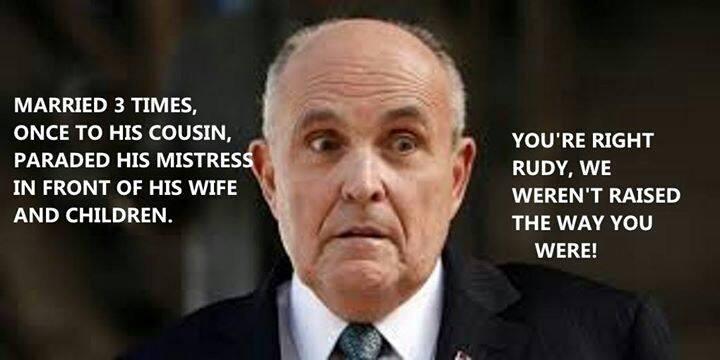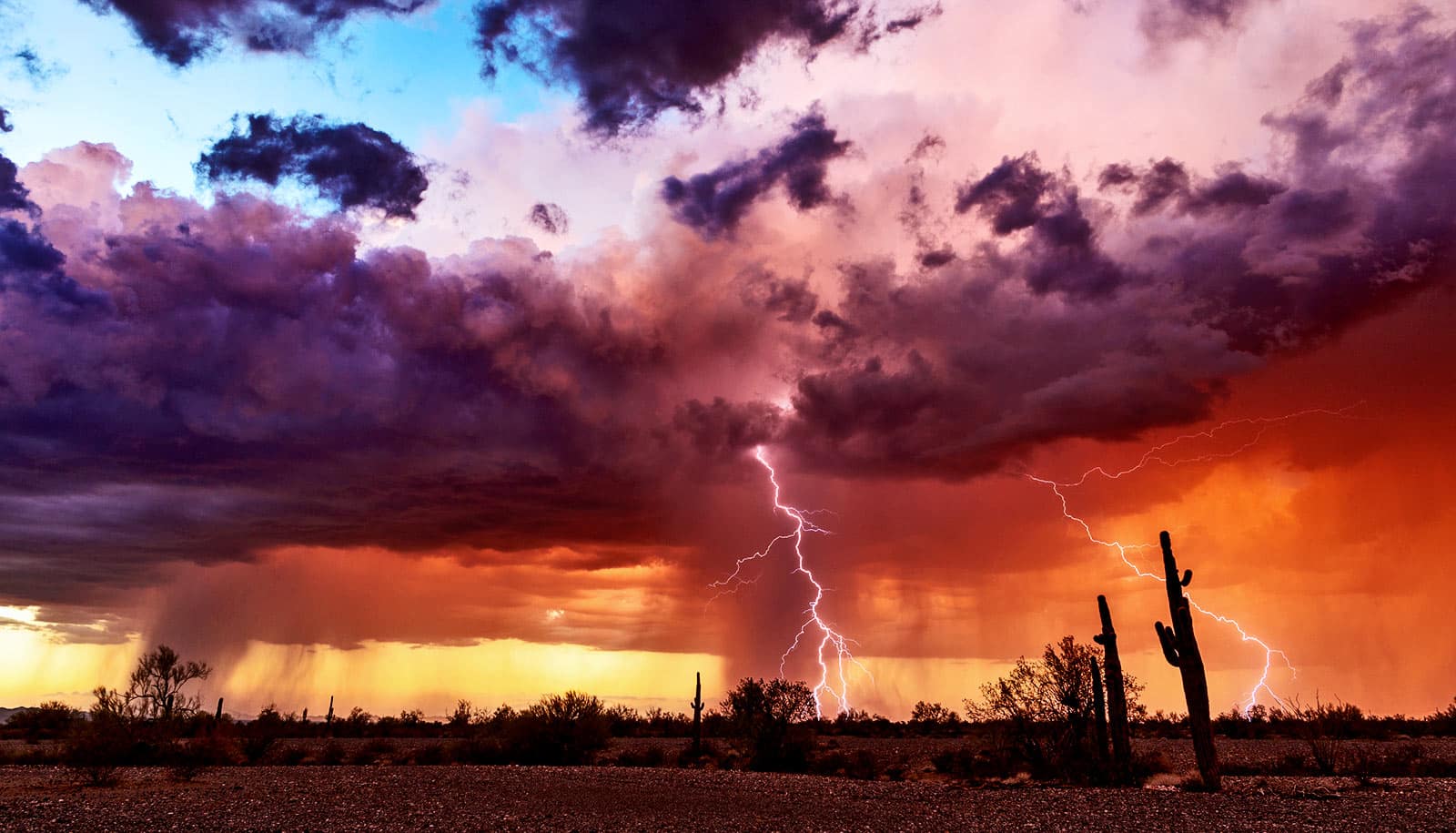Environmental migrants or
climate refugees[a] are people who are forced to leave their home region due to sudden or long-term changes to their local environment. These are changes which compromise their well-being or secure livelihood. Such changes are held to include increased
droughts,
desertification,
sea level rise, and disruption of seasonal
weather patterns (i.e.
monsoons[1]). Climate refugees may choose to flee to or migrate to another country, or they may migrate internally within their own country.
[2]
Despite problems in formulating a uniform and clear-cut definition of 'environmental migration', such a concept has increased as an issue of concern in the 2000s as
policy-makers, environmental and social scientists attempt to conceptualize the potential societal
effects of climate change and general
environmental degradation. "Unless it is assumed" in order to consider a person a climate refugee, nature or the environment could be considered the persecutor.
[5]
Definition and concept
Climate refugees do not really fit into any of the legal
definitions of a refugee. Not all climate refugees migrate from their home country, on occasion they are just displaced within their country of origin. Moreover, the refugees aren't leaving their homes because of fear they will be persecuted, or because of "generalized violence or events seriously disturbing public order."
[6] Even though the definition of who is a refugee was expanded since its first international and legally binding definition in
1951 people who are forced to flee due to environmental change are still not offered the same legal protection as refugees.
[7]
"Environmental migrants are persons or groups of persons who, for compelling reasons of sudden or progressive changes in the environment that adversely affect their lives or living conditions, are obliged to leave their habitual homes, or choose to do so, either temporarily or permanently, and who move either within their country or abroad."
- Environmental emergency migrants: people who flee temporarily due to an environmental disaster or sudden environmental event. (Examples: someone forced to leave due to a hurricane, tsunami, earthquake, etc.)
- Environmental forced migrants: people who have to leave due to deteriorating environmental conditions. (Example: someone forced to leave due to a slow deterioration of their environment such as deforestation, coastal deterioration, etc.)
- Environmental motivated migrants also known as environmentally induced economic migrants: people who choose to leave to avoid possible future problems. (Example: someone who leaves due to declining crop productivity caused by desertification)
"those displaced temporarily due to local disruption such as an avalanche or earthquake; those who migrate because environmental degradation has undermined their livelihood or poses unacceptable risks to health; and those who resettle because
land degradation has resulted in desertification or because of other permanent and untenable changes in their habitat".
[11]
Other categorisations include:
- Pressured environmental migrants[12] – slow onset
- This type of migrant is displaced from their environment when an event is predicted prior to when it would be imperative for the inhabitants to leave.[13] Such events could be desertification or prolonged drought, where the people of the region are no longer able to maintain farming or hunting to provide a hospitable living environment.[14]
- Imperative environmental migrants[15] – gradual onset
- These are migrants that have been or will be "permanently displaced" from their homes due to environmental factors beyond their control.
- Temporary environmental migrants[15] – short term, sudden onset
- This includes migrants suffering from a single event (i.e. Hurricane Katrina). This does not go to say that their status of being temporary is any less severe than that of the other, it simply means that they are able to go back to the place they fled from (though it may be undesirable to do so) granted that they are able to rebuild what was broken, and go on to maintain a similar quality of life to the one prior to the natural disaster. This type of migrant is displaced from their home state when their environment rapidly changes. They are displaced when disastrous events occur, such as tsunamis, hurricanes, tornadoes, and other natural disasters occur.[16]
Enumeration[edit]
Global statistics[edit]
There have been a number of attempts over the decades to enumerate environmental migrants and refugees. Jodi Jacobson (1988) is cited as the first researcher to enumerate the issue, stating that there were already up to 10 million 'Environmental Refugees'. Drawing on 'worst-case scenarios' about sea-level rise, she argued that all forms of 'Environmental Refugees' would be six times as numerous as political refugees.
[17] By 1989,
Mustafa Tolba, Executive Director of UNEP, was claiming that 'as many as 50 million people could become environmental refugees' if the world did not act to support sustainable development.
[18] In 1990, the
Intergovernmental Panel on Climate Change (IPCC 1990: 20) declared that the greatest single consequence of climate change could be migration, 'with millions of people displaced by shoreline erosion, coastal flooding and severe drought'.
[19] In the mid-1990s, British environmentalist,
Norman Myers, became the most prominent proponent of this 'maximalist' school (Suhrke 1993). Noting, that "environmental refugees will soon become the largest group of involuntary refugees".
[20] Additionally, he stated that there were 25 million environmental refugees in the mid-1990s, further claiming that this figure could double by 2010, with an upper limit of 200 million by 2050 (Myers 1997).
[21] Myers argued that the causes of environmental displacement would include desertification, lack of water, salination of irrigated lands and the depletion of biodiversity. He also hypothesised that displacement would amount to 30m in China, 30m in India, 15m in Bangladesh, 14m in Egypt, 10m in other delta areas and coastal zones, 1m in island states, and with otherwise agriculturally displaced people totalling 50m by 2050.
[22] More recently, Myers has suggested that the figure by 2050 might be as high as 250 million.
[23]

A map showing where natural disasters caused/aggravated by
global warming may occur, and thus where environmental refugees would be created
[citation needed]
These claims have gained significant currency, with the most common projection being that the world will have 150–200 million climate change refugees by 2050. Variations of this claim have been made in influential reports on climate change by the IPCC (Brown 2008: 11)
[24] and the Stern Review on the Economics of Climate Change (Stern et al. 2006: 3),
[25] as well as by NGOs such as Friends of the Earth,
[26] Greenpeace Germany (Jakobeit and Methmann 2007)
[27] and Christian Aid;
[23] and inter-governmental organisations such as the Council of Europe,
[28] UNESCO,
[29] IOM (Brown 2008) and UNHCR.
[30]
Norman Myers is the most cited researcher in this field, who found that 25 million environmental migrants existed in 1995 in his work (Myers & Kent 1995),
[22] which drew upon over 1000 sources.
[31] However,
Vikram Kolmannskog has stated that Myers' work can be 'criticized for being inconsistent, impossible to check and failing to take proper account of opportunities to adapt' (2008: 9).
[32] Furthermore, Myers himself has acknowledged that his figures are based upon 'heroic extrapolation' (Brown 2008: 12).
[24] More generally, Black has argued that there is 'surprisingly little scientific evidence' that indicates that the world is 'filling-up with environmental refugees' (1998: 23).
[33] Indeed, Francois Gemenne has stated that: 'When it comes to predictions, figures are usually based on the number of people living in regions at risk, and not on the number of people actually expected to migrate. Estimates do not account for adaptation strategies [or] different levels of vulnerability' (Gemenne 2009: 159).
[34]
In the first half of the year 2019, 7 million people was internally (e.g. in their country) displaced by events of extreme weather, according to the Internal Displacement Monitoring Centre. This is a record and the number is 2 times bigger that the number displaced by violence and conflicts. Large part of the displaced people were evacuated when the storm came, what saved many lives, but the price for the economy was very big
[35][36].
Asia and the Pacific[edit]
According to the Internal Displacement Monitoring Centre, more than 42 million people were displaced in Asia and the Pacific during 2010 and 2011, more than twice the population of Sri Lanka. This figure includes those displaced by storms, floods, and heat and cold waves. Still others were displaced by drought and sea-level rise. Most of those compelled to leave their homes eventually returned when conditions improved, but an undetermined number became migrants, usually within their country, but also across national borders.
[37]
Climate-induced migration is a highly complex issue which needs to be understood as part of global migration dynamics. Migration typically has multiple causes, and environmental factors are intertwined with other social and economic factors, which themselves can be influenced by environmental changes. Environmental migration should not be treated solely as a discrete category, set apart from other migration flows. A 2012 Asian Development Bank study argues that climate-induced migration should be addressed as part of a country's development agenda, given the major implications of migration on economic and social development. The report recommends interventions both to address the situation of those who have migrated, as well as those who remain in areas subject to environmental risk. It says: "To reduce migration compelled by worsening environmental conditions, and to strengthen the resilience of at-risk communities, governments should adopt policies and commit financing to social protection, livelihoods development, basic urban infrastructure development, and disaster risk management."
[38]
Additionally, it is maintained that the poor populate areas that are most at risk for environmental destruction and climate change, including coastlines, flood-lines, and steep slopes. As a result, climate change threatens areas already suffering from extreme poverty. "The issue of equity is crucial. Climate affects us all, but does not affect us all equally," UN Secretary-General Ban Ki-moon told delegates at a climate conference in Indonesia.
[39] Africa is also one of the world regions where environmental displacement is critical largely due to droughts and other climate-related eventualities.
[40]
In
Minqin county,
Gansu Province, "10,000 people have left the area and have become
shengtai yimin, 'ecological migrants'".
[41]
In 2013 a claim of a
Kiribati man of being a "climate change refugee" under the
Convention relating to the Status of Refugees (1951) was determined by the New Zealand High Court to be untenable.
[42][43] The Refugee Convention did not apply as there is no persecution or serious harm related to any of the five stipulated convention grounds. The Court rejected the argument that the international community itself (or countries which can be said to have been historically high emitters of carbon dioxide or other greenhouse gases) were the "persecutor" for the purposes of the Refugee Convention.
[42] This analysis of the need for the person to identify persecution of the type described in the Refugee Convention does not exclude the possibility that a people for countries experiencing severe impacts of climate change can come with the Refugee Convention. However, it is not the climate change event itself, rather the social and political response to climate change, which is likely to create the pathway for a successful claim. The New Zealand Immigration and Protection Tribunal and the High Court, "there is a complex inter-relationship between natural disasters, environmental degradation and human vulnerability. Sometimes a tenable pathway to international protection under the Refugee Convention can result. Environmental issues sometimes lead to armed conflict. There may be ensuing violence towards or direct repression of an entire section of a population. Humanitarian relief can become politicised, particularly in situations where some group inside a disadvantaged country is the target of direct discrimination".
[44] The New Zealand Court of Appeal also rejected the claim in a
2014 decision. On further appeal, the New Zealand Supreme Court confirmed the earlier adverse rulings against the application for refugee status, with the Supreme Court also rejecting the proposition "that environmental degradation resulting from climate change or other natural disasters could never create a pathway into the Refugee Convention or protected person jurisdiction".
[45]
In 2014 attention was drawn to an appeal to the
New Zealand Immigration and Protection Tribunal against the deportation of a Tuvaluan family on the basis that they were "climate change refugees", who would suffer hardship resulting from the environmental degradation of
Tuvalu.
[46] However the subsequent grant of residence permits to the family was made on grounds unrelated to the refugee claim.
[47] The family was successful in their appeal because, under the relevant immigration legislation, there were "exceptional circumstances of a humanitarian nature" that justified the grant of resident permits as the family was integrated into New Zealand society with a sizeable extended family which had effectively relocated to New Zealand.
[47]
North America[edit]
There have been 178 Alaskan communities threatened by erosion of their land. The annual temperature has steadily increased over the last fifty years, with Alaska seeing it double (compared to the rate seen across the rest of the United States) to the rate of 3.4 degrees, with an alarming 6.3 degrees increase for the winters over the past fifty years. Many of the communities residing in these areas have been living off the land for generations. There is an eminent threat of loss of culture and loss of tribal identity with these communities.
[48]
Between 2003 and 2009, a partial survey by the
Army Corps of Engineers identified thirty-one Alaskan villages under imminent threat of flooding and erosion. By 2009, 12 of the 31 villages had decided to relocate, with four (
Kivalina,
Newtok,
Shaktoolik, and
Shishmaref) requiring immediate evacuation due to danger of immediate flooding along with limited evacuation options.
[49]
However, relocation is proving difficult because there is no governmental institutional framework that exists for the aid of climate refugees in the United States. The Obama administration promised to fund $50.4 billion to help with relocation efforts in 2016.
[citation needed]
Louisiana[edit]
Isle de Jean Charles, Louisiana, home to the Biloxi-Chitimacha-Choctaw First Nation, is being depopulated with federal grant money, due to saltwater intrusion and sea level rise. This Indigenous Nation residing on the Isle de Jean Charles is facing the effects of climate change. The resettlement of this community of around 100, exists as the first migration of a total community in the state of Louisiana. This state has lost almost 2000 square miles of its coast within the last 87 years and now an alarming rate of almost 16 square miles a year is disappearing. In early 2016, a 48-million-dollar grant was the first allocation of federal tax dollars to aid a community suffering from direct impact of climate change. Louisiana has lost land mass comparable to the size of the state of Delaware revealing land mass loss that is at a rate faster than many places in the world. The resettlement plan for the Isle de Jean Charles is at the forefront of responding to climate change without destroying the community that resides within.
[50][51]
Washington state[edit]
The
Quinault village of
Taholah has requested $60 million to relocate away from the encroaching Pacific Ocean.
[52]
South America[edit]
Many peer-reviewed articles analyzing migration in South America have found multiple types of linkages between climate change and its effect on migration.The effects and results vary based on the type of climatic change, socioeconomic status and demographic characteristics of migrants and the distance and direction of the migration.
[53] Since most climate migration studies are done in the developed world, scientists have called for more quantitative research within the developing world, including South America.
[54] Migration in South America does not always increase as a result of increased environmental threats but is affected by factors such as climate variability and land suitability. These migrations happen either gradually or suddenly but are typically directed from rural to urban areas. Inter-provincial migration is shown to not be as heavily influenced by environmental changes whereas migration outside of the home country is heavily influenced by environmental changes.
[54] The results of a climactic event catalyzing migration change depending on the onset of the event, however, climate change related events such as drought and hurricanes augment or increase youth migration. Youth are more likely to migrate as a response to climate-related events. As a result, children who have been displaced are found to travel shorter distances to find work in rural destinations versus further to an urban area.
[55] Researchers suggest a review of the terms that define who is an environmental migrant since policy-making bodies and intergovernmental agencies most affect responses when an environmental event causes people to migrate. Because of the increase in interest in this topic in the past decade some people call for a measure called preventive resettlement. The cases in which preventive resettlement appear appropriate is typically discerned by local and governmental bodies. Others call for an increase in social programs to both prevent and help in a migration event.
[56]
Political and legal perspectives[edit]
The
International Organization for Migration (IOM) expects the scale of global migration to rise as a result of accelerated climate change.
[58] It, therefore, recommends policymakers around the world to take a proactive stance on the matter.
[59] The IOM is composed of 146 member states and 13 observer states and "works closely with governments in promoting migration management that ensures humane and orderly migration that is beneficial to migrants and societies."
[59] Additionally, when interviewing Oliver- Smith, an anthropologist and member of the UN group,
National Geographic Magazine noted that "there are at least 20 million environmental refugees worldwide, the [UN] group says – more than those displaced by war and political repression combined." Therefore, it is imperative that we begin to recognize this recent division of refugee.
[60][61]
The
Environmental Justice Foundation (EJF) has argued that the people who will be forced to move due to climate change currently have no adequate recognition in international law.
[62] The EJF contends that a new multilateral legal instrument is required to specifically address the needs of "climate refugees" in order to confer protection to those fleeing environmental degradation and climate change.
[63] They have also asserted that additional funding is needed to enable developing countries to adapt to climate change.
Sujatha Byravan and Sudhir Chella Rajan have argued for the use of the term 'climate exiles' and for international agreements to provide them political and legal rights, including citizenship in other countries, bearing in mind those countries' responsibilities and capabilities.
[2][3][4]
In some cases, climate change may lead to conflict arising between countries that as a result of flooding or other conditions produce a large number of refugees, and bordering countries that build fences to keep out these refugees. The
Bangladesh–India border is largely separated via a fence, and case studies suggest the possibility of violent conflict arising due to people fleeing from areas suffering from the destruction of
arable land. Current migration has already resulted in low-scale conflicts.
[64]
The Intergovernmental Panel on Climate Change (IPCC) predicts that sea levels will increase with up to 0.6 meters by 2100. This will cause populations to wipe out entirely. Small areas may have nothing left. This could lead to the loss of millions of refugees. Refugee organizations have taken on cases of many different refugees. The Organization for Refugees Asylum and Migration (ORAM) is designed to help refugees in seeking status and resettlement. They are designed to help refugees overcome the Refugee process. ORAM's main goal is to protect the vulnerable refugees for the laws put on refugee and help end the refugee asylum process. There is a ton of legal action taken against refugees. Political laws are put on the refugees to either harm or hurt the refugees.
[65]
Global perceptions from possible countries of asylum[edit]
Reaction as for the possible acceptance of possible environmental migrants is mixed, this is because of countries dealing with other domestic problems. For example, India, which has a population of over 1 billion people, is building an
India-Bangladesh barrier. While the stated purpose of the barrier is to deter drug trade, the barrier may also help prevent the possible refuge of 20 million Bangladeshis who may be displaced by future climate change.
[66] This is a contrast to Canada in which public pressure is slowly building to create policies that will allow accommodation and better planning.
[67][68][69][70] On 20 September 2016,
Prime Minister Trudeau of Canada told the UN Summit for Refugees and Migrants that plans just for resettlement would not be enough.
[71] Sweden which had allowed refugees to seek asylum from areas of war in an open door policy has changed to a policy that is more deterrent of asylum seekers and is even offering money for asylum seekers to withdraw their requests.
[72][73] The United States, which was warned under the Obama administration to prepare for climate change and the refugees, may have more future difficulties being prepared to do so under current President Donald Trump as he explicitly denies climate change.
[74][75] This can be seen as Trump denies the possibility of climate change, has signed executive orders dismantling environmental protections, and has ordered the EPA to remove climate change information from their public site, likely signaling America's unwillingness to acknowledge the future possibility of increased environmental refugees from climate change.
[76][77][78]
Asylum is the freedom of prosecution in the country the people want to be in. Different countries have their own rules and laws of asylum. The United States, for example, has a system recognized by federal and international laws. France was the first country to constitute the right to asylum. So the right to asylum differs in different nations. There is a still fight for the right to asylum in some areas of the world.
[79]
Perspective of countries taking immigrants[edit]
In the UK, research is being done on how climate change's impact on countries that are emigrated to will vary due to the infrastructure of those countries. They want to put into place policies so that those who have to migrate could go throughout Europe, and have solid emergency planning in place so that the people being displaced would have a swift and quick plan of escape once their environment can no longer handle inhabitants-slow or sudden onset.
[80] The end goal of this work is to determine the best course of action in the event of various environmental catastrophes.
Popular culture[edit]

German artist
Hermann Josef Hack's
World Climate Refugee Camp in Hannover displaying 600 small climate refugee tents.
The notion of 'environmental migrant', and particularly 'climate refugee', has gained traction in popular culture. A documentary entitled
Climate Refugees has been released. "Climate Refugees" is an Official Selection for the 2010 Sundance Film Festival.
[81] More recently, Short Documentary Academy Award Nominee,
Sun Come Up (2011), tells the story of Carteret islanders who are forced to leave their ancestral land in response to climate change and migrate to war-torn Bougainville
[82]
Since 2007, German artist
Hermann Josef Hack has shown his World Climate Refugee Camp in the centers of various European cities. The model camp, made of roughly 1000 miniature tents, is a public art intervention that depicts the social impacts of climate change.
[83]
Documentary films[edit]
- Climate Refugees (2010), Documentary movie directed by Michael P. Nash. Starring: Lester Brown, Yvo de Boer, Paul R. Ehrlich ...
- Eco Migrants: The Case of Bhola Island (2013), Documentary movie directed by Susan Stein. Starring Katherine Jacobsen, Nancy Schneider, Bogumil Terminski
- Refugees of the Blue Planet (2006), Documentary movie directed by Hélène Choquette & Jean-Philippe Duval.
- The Land Between (2014) documentary movie directed by David Fedele.[84]
















